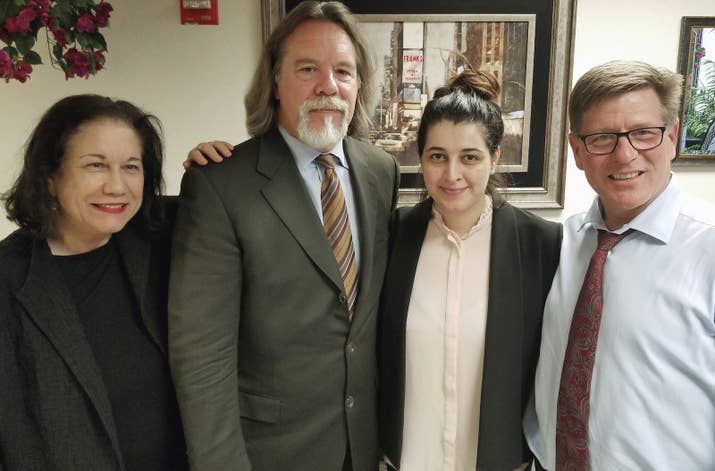
Recently the acquittal of Noor Salman has re-opened discussion of the mass murder at the gay nightclub in Orlando, Florida, in June 2016. The photo here is of Salman (in the yellow blouse) posing with her attorneys.
Salman's husband, Omar Mateen, did the deed, walking into the Pulse and killing 49 people, wounding another 53, then dying in a shootout with law enforcement.
The Feds charged her as an accessory on the theory that she helped him scout the location and accompanied him on a shopping trip during which he purchased the ammunition.
The jury acquitted her. Judging from post-trial interviews with jurors, this was a reasonable-doubt acquittal. For example, as to that shopping trip: it may have been that Salman was in another store buying a toy for their child, while he was buying the ammo.
The issue of her complicity became bound up with the issue of his motive. The FBI's theory of the case was that he specifically wanted to shoot up the Pulse because it was a gay nightclub, out of his revulsion against gays.
On the other hand, if his target was that of a generic jihadist, to shoot up a number of unbelievers in a way that would capture a lot of attention, the Pulse might simply have been a target of opportunity.
The notion of her helping him scout the place plays into the broader notion that they were a husband and wife team engaged in jihad. But ...
Melissa Jeltsin, in a recent piece in HUFF PO, writes that at the trial even the prosecution acknowledged that the Pulse was not the original target, that it was the Disney Springs shopping and entertainment complex that Mateen first wanted to hit. Then (with his wife nowhere in sight) Mateen got spooked by the Disney Springs security, left, and chose the nightclub as a soft target less than an hour before the attack. That was a big problem with the prosecution's case, an abandonment of a major pillar of their theory. If the choice of Pulse was a last minute one, whatever 'scouting' he supposedly did with his wife seems to lose relevance.
Jeltsin also says that on her reading of the evidence there is no reason to believe he EVER knew the Pulse catered to a gay clientele.
The theory of the attack as an attack on gays had been much discussed in the period after the attack, generally in connection with the idea that the shooter was a repressed or closeted gay himself. The commentary was along the lines of "this is what happens when society is not tolerant of gays -- some are driven to repression of what they take to be evil, and then they project that evil onto others, less repressed, and act like this!"
The idea has a venerable pedigree. But in this instance it seems to be an example of a beautiful theory felled by contrary facts.
Comments
Post a Comment